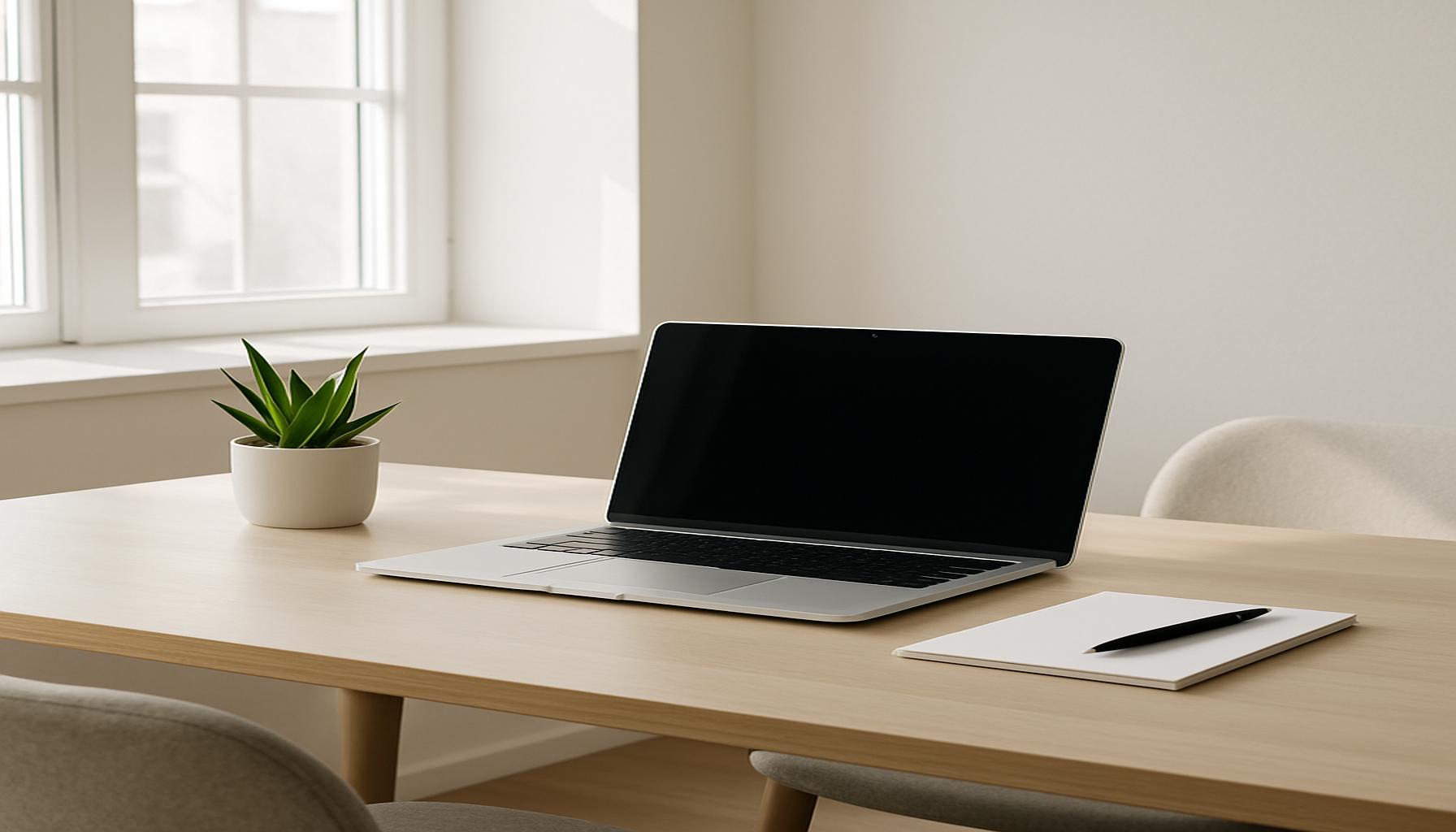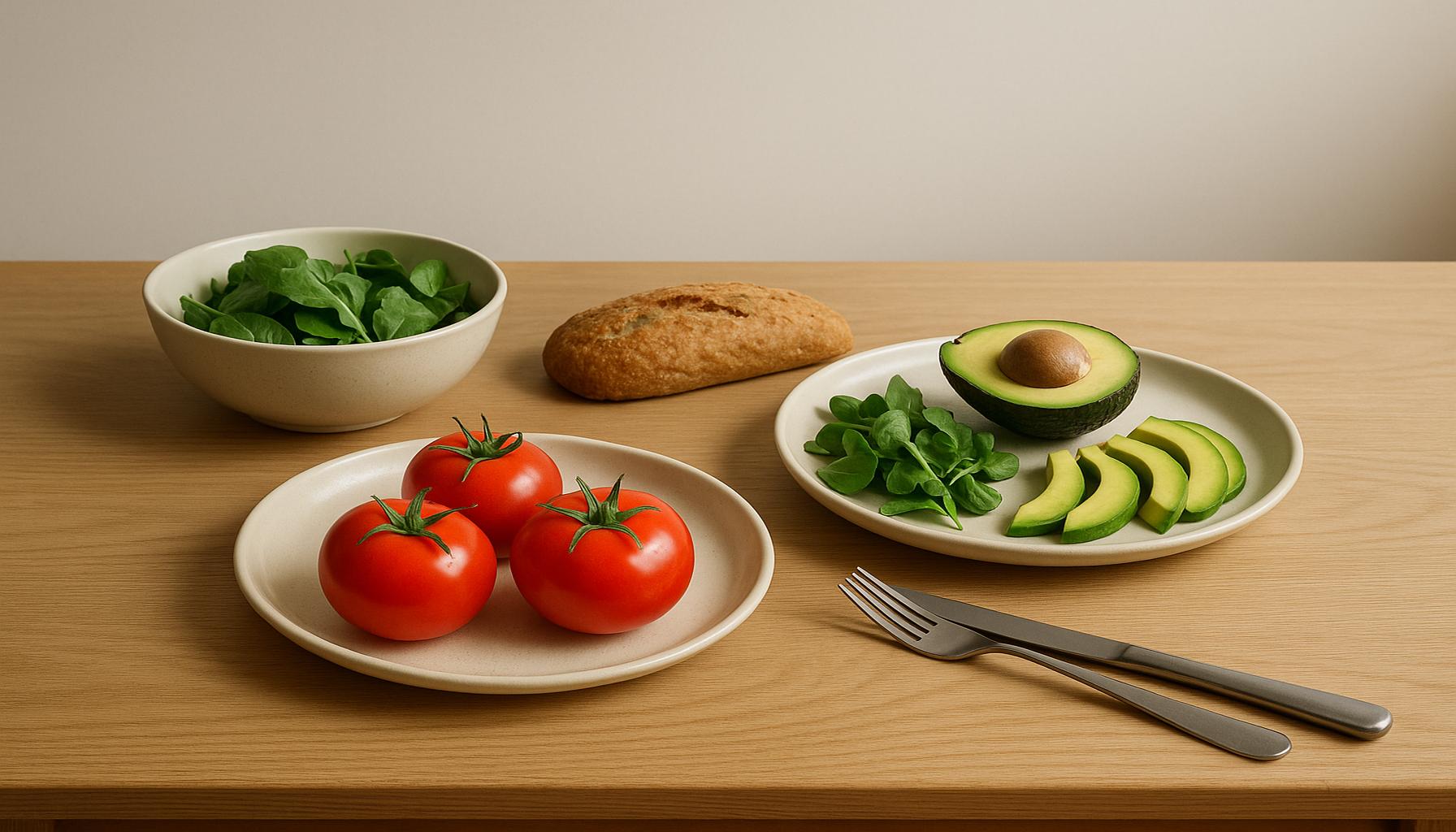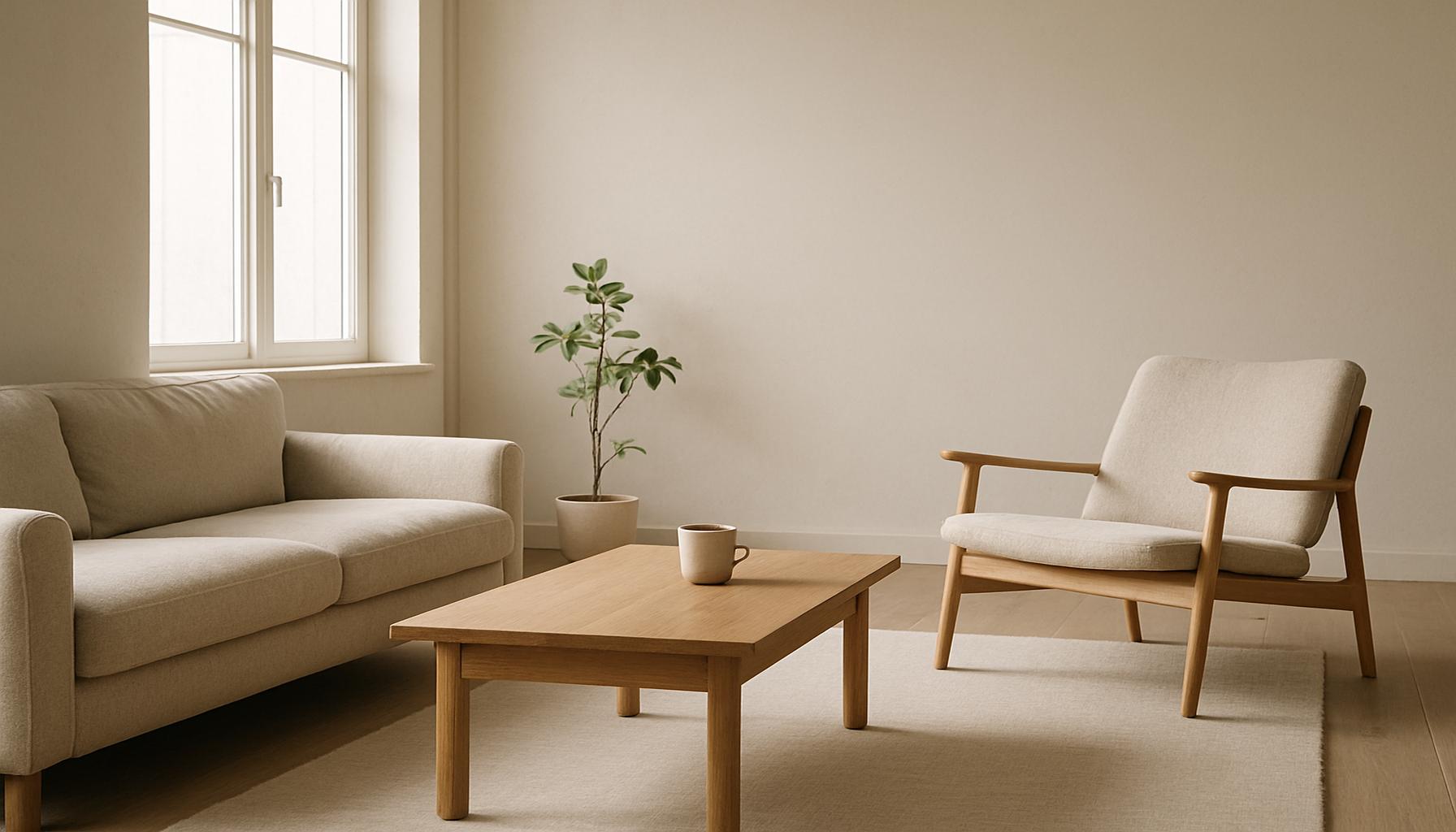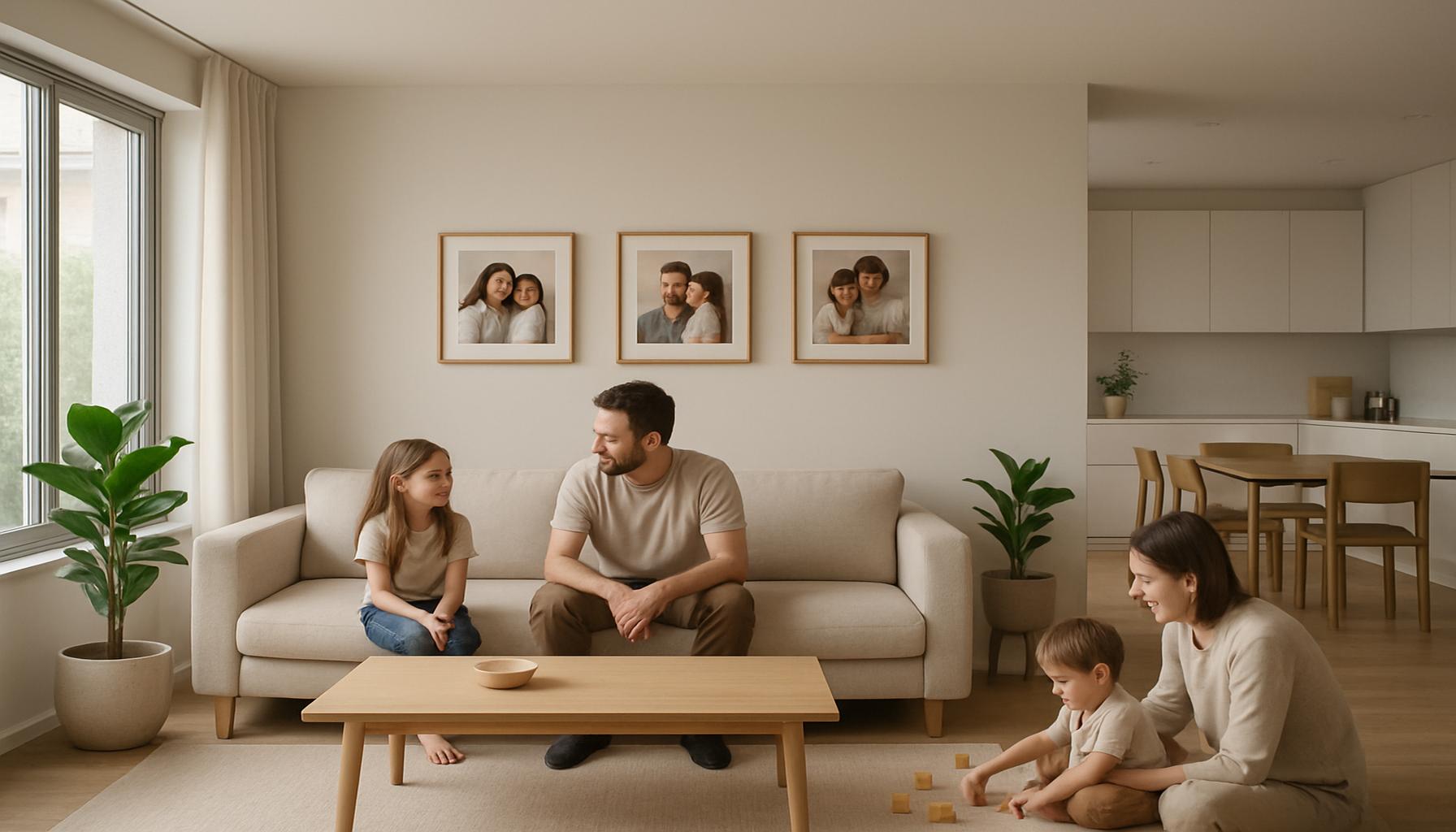Creating Simplified Workspaces: How Minimalism Boosts Productivity and Creativity

Understanding Minimalism in Workspaces
In the modern workplace, where deadlines loom and multitasking is the norm, excess clutter can become a formidable obstacle to individual performance. As professionals strive to maintain focus in an increasingly distracting environment, creating a minimalist workspace has emerged as a transformative approach. By eliminating unnecessary items and prioritizing essential tools, individuals can cultivate a productive atmosphere that fosters both creativity and efficiency.
Benefits of a Minimalist Workspace
Research supports the notion that a minimalist workspace can lead to various cognitive and emotional benefits. For instance, improved focus is a primary advantage. According to a study published in the Journal of Environmental Psychology, individuals who work in less cluttered environments report higher levels of concentration and better performance on attention-related tasks. This is largely because a simplified space minimizes distractions and allows for deeper engagement with the work at hand.
Moreover, minimalism can significantly enhance creativity. A tidy, organized environment encourages innovative thinking by creating mental clarity. For example, tech companies like Apple and Google famously design their offices with minimalist principles in mind, promoting open spaces devoid of clutter that stimulate ideation and collaboration among employees.
Furthermore, decluttering your workspace contributes to reduced stress. A chaotic environment often triggers feelings of overwhelm, which can lead to decreased morale and productivity. Research from the Princeton University Neuroscience Institute indicates that physical clutter can compete for your attention, resulting in heightened stress levels. A minimalist environment, in contrast, provides a sense of calm that supports clear thinking.
Adopting Minimalism: The How-To
Transitioning to a minimalist workspace requires intentionality and reflection on what is essential. Start by implementing optimized organization. Designate specific areas for tools, materials, and paperwork. Investing in storage solutions, such as drawer organizers or filing cabinets, can make a noticeable difference in your workspace’s tidiness.
Minimalism also promotes increased efficiency. By simplifying layouts, workflows are streamlined; for instance, having all frequently used items within arm’s reach prevents unnecessary movement that can disrupt concentration. Tools such as the ‘Five S’ methodology (Sort, Set in order, Shine, Standardize, Sustain) popular in Lean manufacturing can further aid in your decluttering journey.
Beyond functionality, adopting a minimalist approach allows for greater personal expression. By curating only the items that resonate with your values, your workspace can become a true reflection of your personality and aspirations. Whether it’s a vintage photograph, a motivational quote, or a potted plant, each item should evoke meaning and inspiration.
As you embark on this journey toward a simplified workspace, remember that the goal is not merely to declutter but to enhance your daily performance and well-being. As you delve into strategies for creating a more intentional work environment, you will discover how minimalism can unlock your full potential, paving the way for success in your professional life.
DIVE DEEPER: Click here to discover more insights
The Transformative Power of a Decluttered Environment
Adopting a minimalist workspace goes beyond merely cleaning up the desk; it’s a deliberate shift towards a more thoughtful, curated environment. This transformation opens the door to multiple benefits that enhance productivity and ignite creativity. Research indicates that when individuals are surrounded by fewer distractions, they are better equipped to focus on both mundane tasks and complex problem-solving. In fact, a study published by the University of Minnesota found that clutter can impair cognitive processing, making it harder to filter out distractions and maintain attention.
Key Features of a Minimalist Workspace
Creating a simplified workspace requires understanding its key features, which contribute directly to a more productive atmosphere. Here are several characteristics commonly found in minimalist environments:
- Open Layout: Emphasizing space rather than items, open layouts allow for easier movement and better natural light, which can elevate mood and energy levels.
- Neutral Color Palette: A clean, neutral color scheme reduces visual noise, allowing the mind to remain calm and focused. Soft whites, grays, and natural wood tones create a tranquil backdrop for creativity.
- Functional Furniture: Choosing furniture that serves double-duty, such as desks with built-in storage or adjustable workstations, keeps the environment organized while promoting ergonomics.
- Intentional Decor: Incorporating only meaningful decor items—like a few personal photographs or carefully chosen artwork—allows for individual expression without overwhelming the senses.
Moreover, an intentionally minimalist workspace promotes mindfulness—a psychological state fostering present-moment awareness. A study conducted by the Journal of Psychology shows that environments encouraging mindfulness can significantly increase task completion rates and overall satisfaction in work. By integrating minimalistic principles, individuals seek not only to enhance productivity but also to create a work setting conducive to innovative thinking and emotional well-being.
Overcoming Challenges in Minimalism
Transitioning to a minimalist workspace is not without its challenges. Initially, individuals might struggle with letting go of items that no longer serve a purpose. The process of decluttering can also evoke feelings of guilt or attachment to past items. To ease this transition:
- Start Small: Focus on one area at a time, such as your desk or a single drawer, rather than attempting to overhaul the entire workspace in one go.
- Set Clear Objectives: Establish what you hope to achieve through minimalism—whether it’s improved focus, reduced stress, or enhanced creativity—providing motivation throughout the process.
- Be Ruthless: As you sort through items, ask yourself if each piece adds value to your work life. If an item doesn’t inspire or serve a purpose, it’s time to let it go.
The journey towards establishing a simplified workspace is one of self-discovery and liberation. By aligning physical surroundings with personal and professional values, individuals can usher in an era of heightened efficiency, clearer thoughts, and a renewed passion for creativity. Engaging in this minimalistic challenge invites reflection on what truly matters in the pursuit of success—both in the workplace and beyond.
| Category | Advantages |
|---|---|
| Fewer Distractions | Minimalist workspaces reduce clutter, allowing individuals to focus on essential tasks and boost productivity. |
| Enhanced Creativity | A simplified environment often leads to greater creative thinking, as the mind is free from chaos and can explore new ideas. |
The approach of creating minimalistic workspaces is gaining traction due to its clear implication on mental clarity. Having less physical clutter translates into less mental clutter, facilitating a streamlined thought process which is essential for both productivity and creativity. Research suggests that environments devoid of distractions not only help in maintaining focus but also assist in achieving a state of flow, wherein tasks are completed more efficiently.Moreover, minimalism encourages individuals to curate their space, aligning it directly with their functional needs. By investing in quality over quantity, professionals can engage in a more intimate and meaningful interaction with their work. This curation process is a stepping stone towards fostering a unique and inspiring workspace, tailored to inspire productivity while enhancing creativity. In exploring the concept of minimalism, it becomes evident that adopting a simplified workspace can ignite not just enhanced efficiency but also encourage innovative thinking, crucial for today’s rapidly evolving work environments.
DIVE DEEPER: Click here to discover more
Innovative Techniques for Achieving Minimalism in Workspaces
While the concept of minimalism may seem straightforward—reducing clutter and streamlining belongings—implementing this philosophy in the workplace requires innovative strategies that cater to modern work habits. Today’s fast-paced environment demands not just a physical decluttering but also an emotional and digital detox to pave the way for a more focused mind. Here are several techniques that can help individuals truly embrace a minimalist workspace while maximizing both productivity and creativity.
Digital Minimalism: Streamlining Your Digital Environment
In an increasingly virtual world, the clutter isn’t just physical. Digital distractions, such as overflowing email inboxes and a chaotic file storage system, can obstruct workflow just as much as a messy desk. Embracing digital minimalism entails establishing systems that promote clarity, such as:
- Email Management: Regularly reduce the number of subscriptions and notifications. Using tools like filters and labels can help prioritize communications, allowing one to focus on what’s essential.
- File Organization: Create a straightforward filing system that sorts documents into categorized folders. Be ruthless in deleting files that are outdated or irrelevant to current projects.
- Screen Simplification: Remove unnecessary apps or icons from your desktop or home screen. A clean digital workspace not only alleviates distractions but aids in improving overall cognitive functions.
Moreover, research from the Harvard Business Review demonstrates that producing a minimal digital interface can reduce the cognitive load, enabling quicker decision-making and improving innovation in problem-solving.
Empowering the Mind with Intentional Breaks
In the quest for productivity, the importance of taking intentional breaks cannot be overstated. Implementing practices such as the Pomodoro Technique—working in concentrated bursts followed by short intervals—can significantly enhance focus and efficiency. During these breaks, engaging in activities that promote mental relaxation, such as meditation or a brief walk, can stimulate creativity. The act of stepping away from one’s desk can offer a fresh perspective, fostering innovative thinking when returning to tasks.
The Role of Nature and Ambiance in Minimalist Workspaces
Incorporating elements of nature into a minimalist workspace can pivotally enhance creativity and focus. Studies have shown that biophilic design—bringing natural elements indoors—can improve overall well-being and productivity. Here are several ways to embed nature into your environment:
- Plants: Incorporating a few potted plants can enhance air quality and lift your mood. Low-maintenance plants like succulents or snake plants are ideal for busy workplaces.
- Natural Light: Utilizing windows for natural light not only reduces energy costs but also synchronizes with our circadian rhythms, boosting energy levels and creativity.
- Aromatherapy: Implementing subtle scents through essential oils can set an ambience of calm and focus. Citrus scents, for instance, are known to improve concentration and motivation.
The bottom line is that minimalism is a holistic approach that transcends surface-level decluttering. By embracing the art of simplicity across all aspects—physical, digital, emotional, and sensory—individuals can foster an environment that maximizes productivity and ignites creativity. As workplaces evolve, so too should our strategies to create innovative, efficient, and inspiring spaces that not only reflect minimalist aesthetics but also empower the mind and spirit in pursuit of excellence.
DISCOVER MORE: Click here to learn about the mental benefits of decluttering!
Conclusion: Embracing Minimalism for Optimal Creativity and Productivity
As we navigate an increasingly complex work landscape, the principles of minimalism serve as a guiding light for enhancing both creativity and productivity. Transitioning towards a simplified workspace isn’t merely about decluttering; it involves a comprehensive approach that embraces physical, digital, and psychological elements. For instance, a well-organized desk can significantly boost focus. Consider the success of companies like Google and Apple, which are known for their minimalistic office designs that foster innovation while minimizing distractions.
By adopting strategies such as digital minimalism, individuals can reduce the overwhelming tide of information that often leads to anxiety and decision fatigue. This practice encourages the conscious management of digital tools, prioritizing essential applications and clearing out unnecessary clutter. Additionally, the incorporation of intentional breaks into one’s work routine can refresh the mind and enhance cognitive clarity. Studies indicate that even short breaks can double productivity, as they provide time for mental resets and deeper engagement upon return.
Moreover, the principles of biophilic design—integrating natural elements into workspaces—have shown substantial benefits. For example, plants can improve air quality and reduce stress levels, contributing to a serene and invigorating environment. This approach not only optimizes the physical layout of a space but also enriches the psychological comfort of employees.
Ultimately, embracing a minimalist approach empowers individuals to strip away the superfluous and focus on what truly matters. In doing so, workplaces can evolve into vibrant, inspiring spaces that not only enhance productivity but also allow creativity to flourish. As we move forward in a world that constantly demands more, let us prioritize simplicity as a powerful catalyst for success. By committing to a minimalist framework, we can find clarity amid chaos, leading to happier, more productive lives both inside and outside the workplace.


